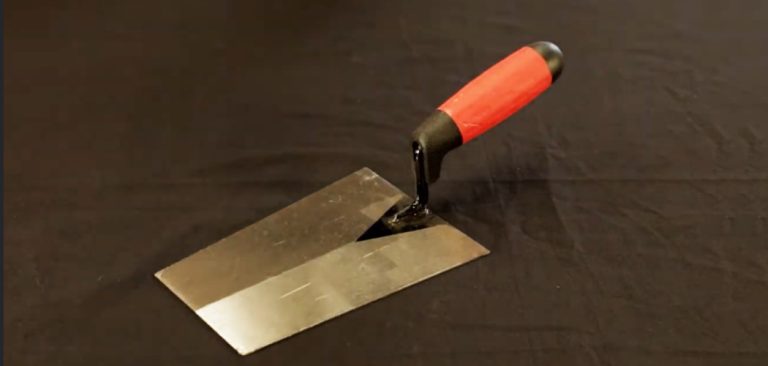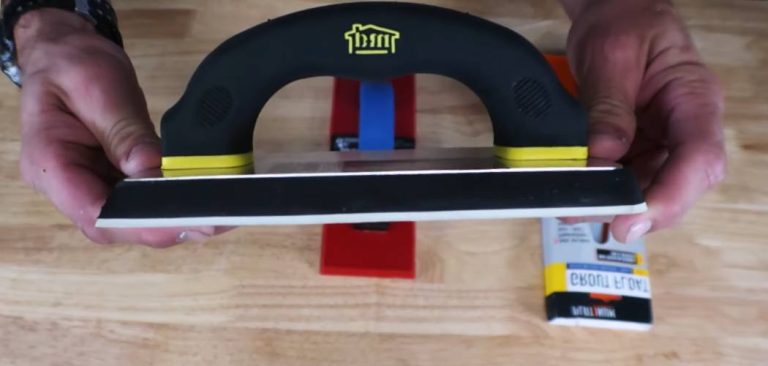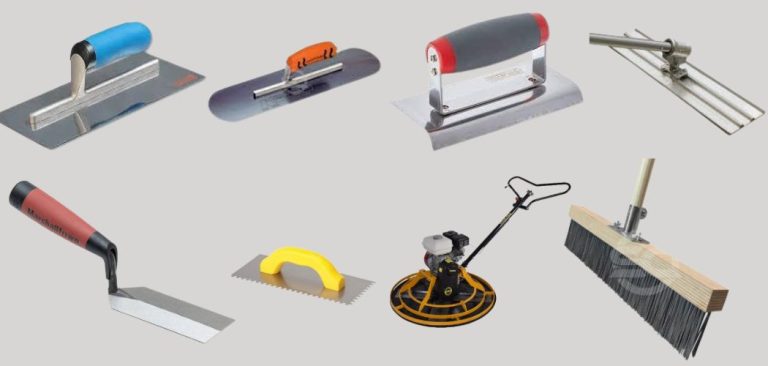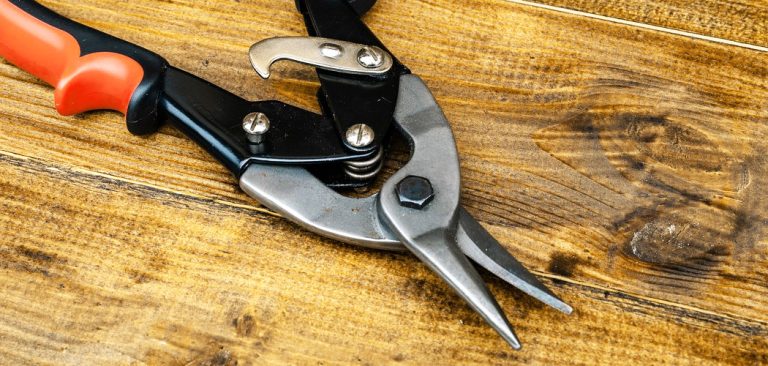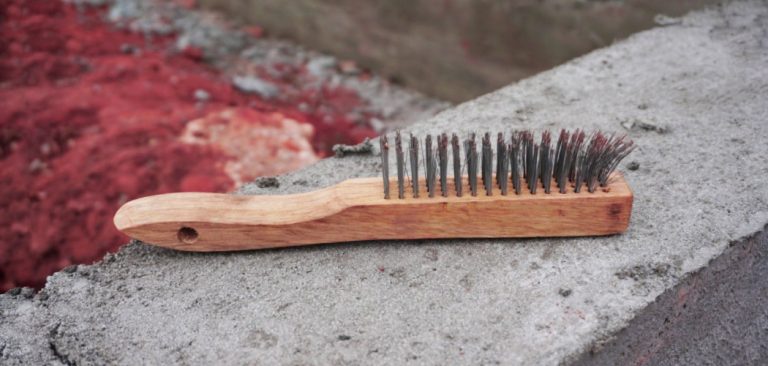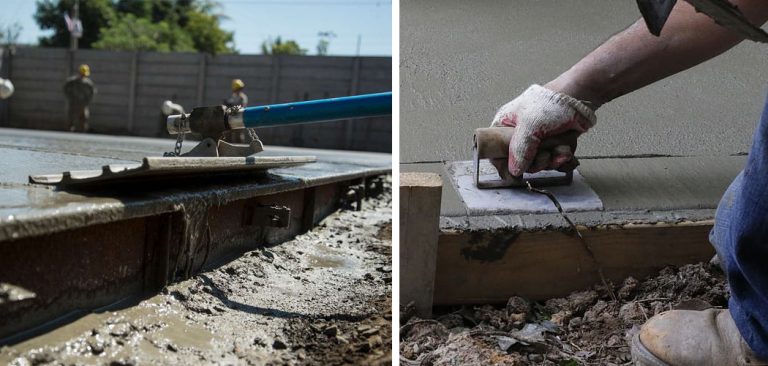The Essential Guide to Gauging Trowel Use and Techniques”
A gauging trowel is a versatile tool for plastering, tile work and concrete finishing. With its rounded nose and flat blade, it helps achieve accurate measurements, consistent application and precise finishing.

This guide’ll explore its practical applications and techniques for achieving high-quality results in various projects. So let’s get started.
Why Was a Gauge Trowel Used?
A gauging trowel is a versatile tool for transferring and applying plaster, mixing small amounts of plaster, and leveling concrete. It has a rounded nose and is not suitable for pointing or bricklaying.
It’s commonly used for plastering and rendering, serving various purposes, such as cleaning plaster buckets. It’s often used as an all-purpose trowel in fast-setting situations for efficiency and good finishing. The flat-nosed version can be used for cleaning plaster buckets.
What is the Different Size of Gauging Trowel for Use in Other Applications ?
Gauging trowels come in various sizes, and the choice of size depends on the specific application and personal preference. Here are some common shapes and their common applications:
4-inch Gauging Trowel:
This small, narrow trowel is designed for intricate work, making it ideal for tasks that demand precision and fine detailing.
It excels in tight spaces and is commonly used for pointing, patching, and small-scale plastering or rendering. Its compact size allows for excellent control.
6-inch Gauging Trowel:
The 6-inch trowel is versatile, suitable for various plastering and rendering tasks.It’s commonly used for transferring plaster from a bucket, mixing small batches, and applying application to walls or surfaces. This site balances precision and coverage, making it a go-to tool for general plastering work.
7-inch Gauging Trowel:
Slightly larger than the 6-inch version, the 7-inch trowel offers more coverage, making it ideal for tasks requiring more plaster application.
It’s often chosen for working with larger amounts of plaster and remains versatile for various applications, providing both precision and efficiency.
10-inch Gauging Trowel:
The 10-inch trowel is a larger option that offers greater coverage and efficiency, making it suitable for applying plaster to larger surface areas.
It’s particularly useful when you need to complete a project more quickly and wish to achieve a smoother and even plaster finish.
12-inch Gauging Trowel:
One of the largest sizes, the 12-inch trowel is the choice for substantial plastering or rendering projects that demand significant coverage.
It allows for faster application on significant surfaces, making it the tool of choice for professionals working on extensive projects that require efficiency and consistency.
The choice of gauging trowel size depends on the project’s specific demands, precision needs, and personal familiarity.
Smaller trowels excel in detail work, while larger ones are more efficient for covering extensive surfaces. Many professionals maintain a selection of gauging trowel sizes to adapt to diverse applications and project requirements.
What Type of Material is Made From Gauging Trowels?
Gauging trowels are typically made from high-quality, durable materials such as stainless steel or carbon steel. These materials provide strength and corrosion resistance, making them suitable for working with various construction materials like plaster, concrete, and mortar.
For comfortable use, the handles may be constructed from wood, plastic, or other ergonomic materials.
Where Do You Use the Gauging Trowel?
As a new user, you can use a gauging trowel primarily for tasks related to plastering and rendering in construction and renovation projects. Here are some common uses for a gauging trowel:
Step 1: Mixing Plaster
Begin by preparing your plaster mix in a bucket or container.Use the rounded, pointed end of the gauging trowel to scoop plaster from the bucket. The sharp end helps you easily collect the application
Step 2: Applying Plaster
To apply plaster to a wall or surface, grasp the gauging trowel by its handle.Use the flat side of the trowel to spread the plaster evenly. The flat side ensures a smooth, uniform plaster application on the surface.
Step 3: Cleaning Mixing Buckets
After using plaster, the gauging trowel proves invaluable for cleaning the mixing bucket.Scrape both the sides and the bottom of the bucket with the trowel to effectively remove any residual plaster, ensuring a clean container for future use.
Step 4: Loading a Hawk
When working with a hawk, efficiently load it with plaster using the gauging trowel.Transfer plaster from the bucket to the hawk’s surface using the trowel, making the dressing readily available for application.
Step 5: Filling Minor Discrepancies and Transferring Plaster
The gauging trowel is also handy for filling minor gaps or imperfections in the plaster.Whether you need to transfer plaster to the application area or clean up excess plaster from buckets, the gauging trowel is a versatile tool for these tasks.
Conclusion?
The gauging trowel is a versatile tool for plastering, tile work, and concrete finishing. Its rounded nose and flat blade allow for accurate measurements, consistent application, and precise finishing.
Understanding its use and employing proper techniques can help achieve high-quality project results. Embrace the gauging trowel as a valuable asset for optimal outcomes in your construction and finishing endeavors.
Read also:–

